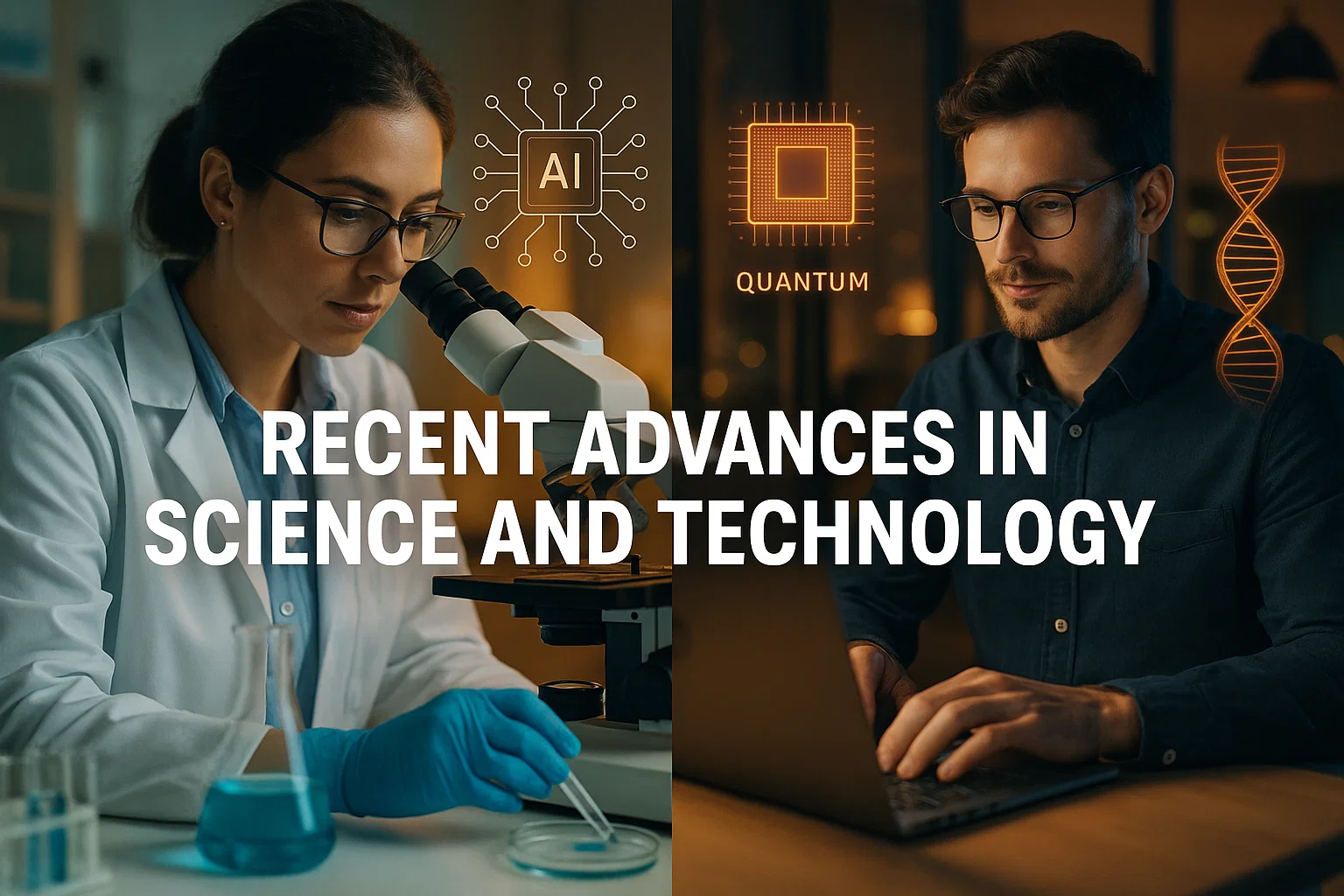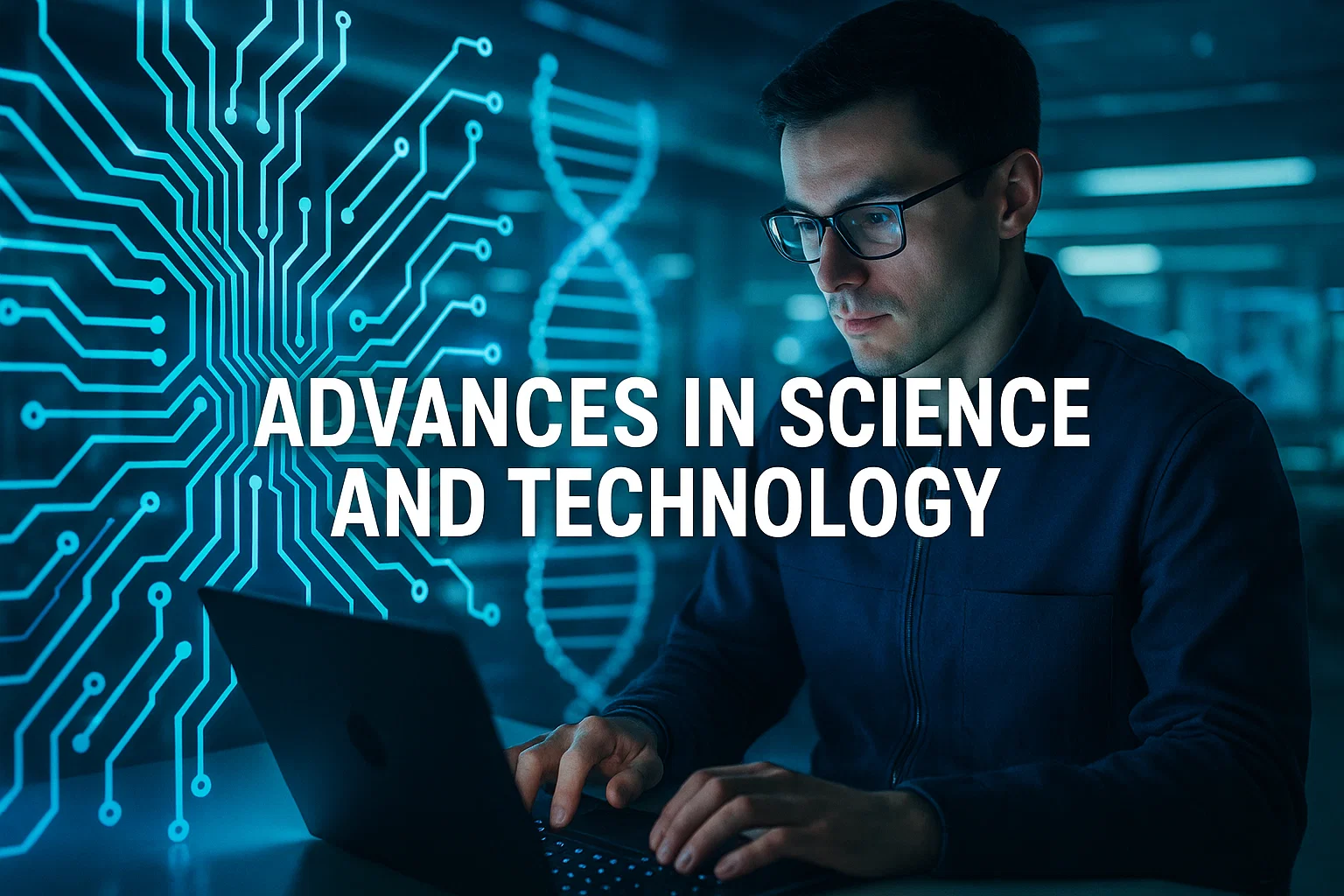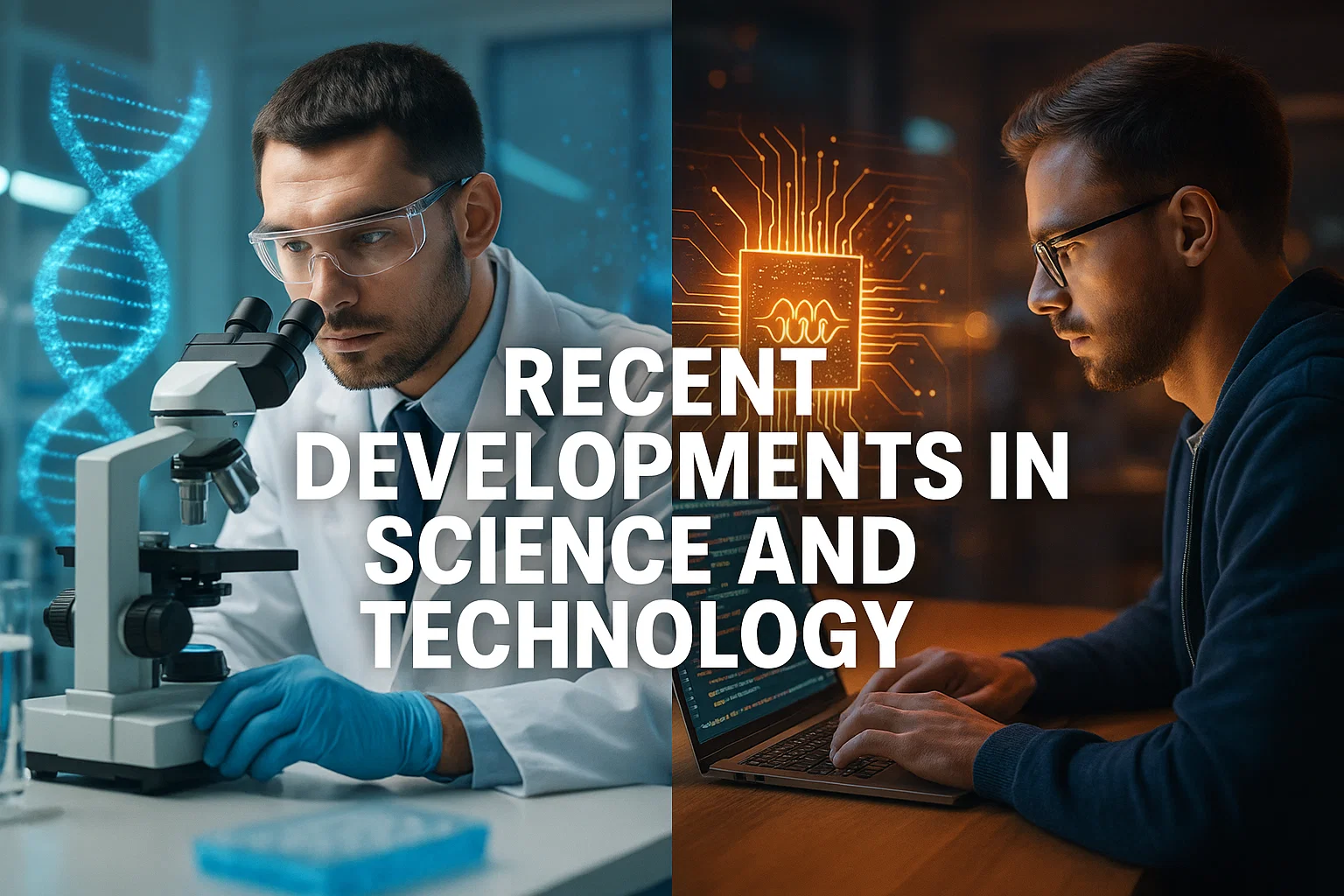Recent advances in science and technology include cheaper, more efficient multimodal AI models, roadmap steps toward fault-tolerant quantum systems, and improved prime editing in biotech; this guide shows practical experiments, tools, and safety steps so you can prototype responsibly and measure impact.
Introduction
Recent advances in science and technology are opening practical routes to faster products, better experiments, and new services, and this post is informational with hands-on steps you can use today. I’ll summarize major technical shifts in AI, quantum, biotech, and materials, explain why each matters for developers and teams, and give a reproducible workflow to test ideas. Expect code snippets, tool recommendations, and a compliance checklist so you can prototype with confidence. In my experience, small, measurable pilots beat big, unfocused bets, and they make it easier to show value to stakeholders quickly.
What the recent advances in science and technology are, and why they matter
The landscape has three converging trends that lower barriers to building: multimodal AI and cost reductions, progress toward practical quantum hardware, and higher-precision gene-editing methods. Each reduces a key friction — compute cost, durability of quantum runs, and editing accuracy — enabling new product ideas.
Multimodal and cheaper AI models
AI groups are shipping models that blend text, images, and other modalities while improving inference cost and training efficiency. Newer model architectures and sparse attention techniques significantly lower runtime or training expense, making advanced capabilities available to smaller teams. These efficiency gains widen who can prototype and deploy multimodal features. The Wall Street Journal
Fault-tolerant and long-duration quantum systems
Roadmaps from major providers lay out concrete steps to fault-tolerant quantum computing, and experimental groups are demonstrating much longer runtime stability by controlling qubit loss. These milestones move quantum from short demonstrations toward sustained computation for targeted simulation and optimization tasks. IBM
Precision biotech tools
Prime editing and engineered editors continue to reduce off-target edits and improve predictability, making therapeutic gene editing more feasible across a broader set of targets. These technical improvements lower risk in preclinical work and open new possibilities for biotech products. Nature
Materials and energy innovations
Materials research is producing better perovskite films for solar and detectors, and advances in solid-state electrolytes and alternative chemistries promise safer, denser energy storage. Those breakthroughs matter if your product relies on low-cost sensors, energy-dense batteries, or new manufacturing routes. Lab Manager
How to test these developments, step-by-step
This workflow turns headlines into validated decisions.
- Pick a focused hypothesis
- Choose a single, measurable outcome. Example: “A multimodal assistant reduces support handle time by 25 percent,” or “A prime-editing protocol yields measurable correction in cell assays.”
- Choose accessible platforms
- For AI, use hosted model APIs or open checkpoints that emphasize cost-effective inference. For quantum, begin with cloud-based simulators before requesting hardware time. For biotech, partner with an accredited contract lab or university core. See provider roadmaps and availability to pick the right tier. NVIDIA Blog
- Prototype minimum viable experiments
- Build an end-to-end minimal flow: input, model or experiment, metric. Keep datasets small and synthetic where privacy or cost is an issue.
- Measure both technical and human metrics
- Track latency, error rates, and model hallucinations for AI, qubit fidelity and run duration for quantum, and on-target editing rates and off-target assays for biotech.
- Document and iterate
- Record experiments, seeds, and config. If a pilot proves the hypothesis, prepare a scale plan, noting costs, compliance, and vendor dependencies.
Quick code example — query papers and model hubs (Python)
# python
# Quick script to query arXiv for recent papers mentioning "multimodal"
# Minimal error handling, for research use only
import requests
def search_arxiv(query="multimodal", max_results=5):
try:
url = "http://export.arxiv.org/api/query"
params = {"search_query": f"all:{query}", "start": 0, "max_results": max_results}
r = requests.get(url, params=params, timeout=10)
r.raise_for_status()
return r.text[:1200] # preview snippet
except Exception as e:
print("arXiv query failed", e)
return None
if __name__ == "__main__":
print(search_arxiv("multimodal AI"))
Explanation: Use this to discover recent papers, then follow links to code or datasets. Respect API usage and parse Atom XML for production.
Where to focus: best practices, tools, and resources
Adopt reproducibility, governance, and low-cost experimentation habits to capture value from recent advances.
Best practices
- Use versioned datasets and experiment tracking to avoid wasted runs.
- Prefer hosted inference for early UX tests, and move to optimized local or L2 inference as cost needs justify.
- For biotech, always use accredited labs for wet lab validation, and get required approvals before any in vivo work.
- Treat quantum runs as hybrid workflows, validating logic on simulators before committing hardware hours. IBM
Recommended tools, pros and cons, one-line tip each
Hugging Face model hub and hosted inference
Pros: immediate access to many multimodal checkpoints, quick to deploy.
Cons: quality and cost vary, some models require fine tuning.
Tip: prototype UX with hosted inference, then profile cost before scaling.
IBM Quantum and cloud SDKs
Pros: roadmaps and SDKs for hybrid quantum-classical development.
Cons: hardware scheduling and noise require careful experiment design.
Tip: simulate small problem sizes locally, then run limited hardware shots. IBM
Bench-to-cloud contracted labs and CROs
Pros: compliant wet lab execution and assay standardization.
Cons: cost and lead times are higher than in-house benches.
Tip: use a CRO for first pass validation to avoid setting up expensive infrastructure. BIOENGINEER.ORG
Challenges, legal and ethical considerations, troubleshooting
New capabilities raise safety, reproducibility, and regulatory questions you must address before scaling.
Common technical hurdles
- Model hallucination, bias, and lack of reliable explainability in multimodal systems.
- Quantum error correction, and hardware noise that affects reproducibility.
- Off-target edits and delivery challenges in gene editing.
Compliance checklist
- AI: document training set provenance, privacy safeguards, and human review steps.
- Quantum: version-control simulations and results, and ensure reproducible seeds for probabilistic runs.
- Biotech: secure IRB or equivalent approvals, biosafety level compliance, and validated assay SOPs. Nature
Alternatives and mitigations
- Use synthetic or de-identified data to lower privacy risk.
- Run hybrid quantum-classical fallbacks for critical computations.
- Begin with ex vivo and cell-line work in accredited labs before moving toward animal models.
Experts note that real progress in quantum requires system-level error correction and integration, not just qubit counts, so plan hybrid workflows first. (IBM) IBM
Reviews in biotech emphasize that lowering edit error rates is the practical path to safer therapeutics, which opens realistic translational routes for more targets. (Nature) Nature
Practical signals to watch and how to interpret them
- Model cost drops and new model releases: test for real latency and quality improvements before adopting. The Wall Street Journal
- Quantum hardware milestones and roadmaps: use them to plan multi-year R&D experiments, not instantaneous product shifts. The Quantum Insider
- Biotech approvals and deal activity: acquisitions or trial readouts validate commercial paths and change partner landscapes. Financial Times
Conclusion and call to action
Recent advances in science and technology give you practical tools to prototype smarter, but success depends on disciplined experiments, reproducibility, and safety. Start with a focused hypothesis, use accessible cloud and partner tooling, and document results for auditability. Key takeaways: prototype small and measurable, prioritize reproducibility and governance, use partner labs and cloud tools to lower cost and risk.
Welcome to Alamcer, a tech-focused platform created to share practical knowledge, free resources, and bot templates. Our goal is to make technology simple, accessible, and useful for everyone. We provide free knowledge articles and guides in technology, offer ready-to-use bot templates for automation and productivity, and deliver insights to help developers, freelancers, and businesses. If you want help designing experiments, wiring model APIs, or building compliant biotech pilots, Alamcer can help you plan and implement them.
Selected reputable reading and resources
- IBM roadmap for fault-tolerant quantum computing, engineering details and strategy. IBM
- MIT and Nature reporting on improved prime editing and gene-editing precision. Nature
- Coverage of cost-efficient multimodal AI model releases and developer access. The Wall Street Journal
- Materials and energy advances in perovskites and solid-state electrolytes, practical application notes. Lab Manager
Bold takeaways:
Prototype small, measure clearly, and prioritize safety, Use cloud and partner tools to reduce cost and risk, Document every experiment for auditability and learning.
FAQs
recent advances in science and technology
Recent advances in science and technology refer to notable, practical progress across fields such as AI model efficiency, quantum hardware roadmaps, precision gene editing, and materials for energy and sensing, which lower barriers for prototype development and productization.
How can I test a new multimodal AI feature quickly?
Use a hosted inference API or an open checkpoint to prototype a narrow interaction, measure latency, accuracy, and user satisfaction, then profile cost before scaling.
Are quantum computers ready for production use?
Quantum hardware is advancing toward fault tolerance, but most real-world production use cases still rely on hybrid classical-quantum workflows and careful simulation before hardware runs. IBM
How do I validate gene-editing improvements safely?
Partner with an accredited lab, run validated in vitro assays for on-target and off-target effects, and secure necessary ethical and biosafety approvals. Nature
Which tools help track scientific papers and releases?
Use arXiv feeds, model hubs like Hugging Face, specialized news alerts, and curated dashboards from IBM, Nature, and other domain sources to stay current.
Is it expensive to try these advances?
Costs vary, but cloud-hosted AI inference, quantum simulation, and contract lab work let you run small experiments at manageable cost before committing to heavy infrastructure.
What governance steps are essential for AI projects?
Document training data provenance, include human review for risky outputs, version models, and monitor for bias and hallucination in production.
How do I balance speed and safety in biotech pilots?
Start with small, controlled ex vivo experiments in accredited labs, document SOPs, and work with CROs to keep timelines tight while respecting safety.
When should I consult legal or compliance experts?
Consult professionals before human trials, major data-sharing agreements, cross-border transfers, or large-scale product launches affecting regulated sectors.
Compliance & disclaimer
This article is educational and not legal, medical, or regulatory advice. Follow platform Terms of Service and applicable privacy, biosafety, and regulatory rules when working with data, biological materials, or regulated technologies. For personalized legal, clinical, or regulatory guidance, consult a qualified professional.



